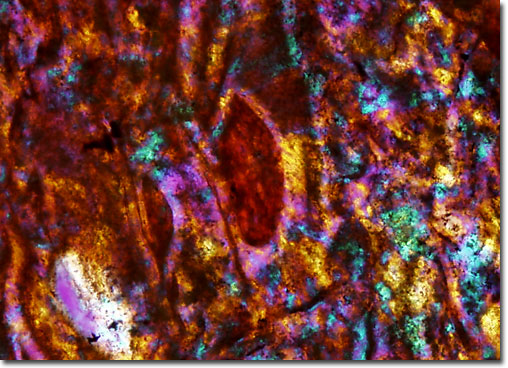|
Many large geologic formations, such as cliffs, hills, and mountains, are often composed of tuff. Within these natural structures, the rock differs significantly in constitution and hardness. In some place, for instance, the tuff may be relatively soft and crumbly, while in others it may be more compact and block-like. These differences primarily depend upon how much a tuff has been welded together. The degree of welding is determined by how hot the volcanic ash that forms a tuff was when it accumulated at the surface of the Earth; the warmer the material, the easier it is for the glass particles to weld together under the weight of overlying deposits.
|
